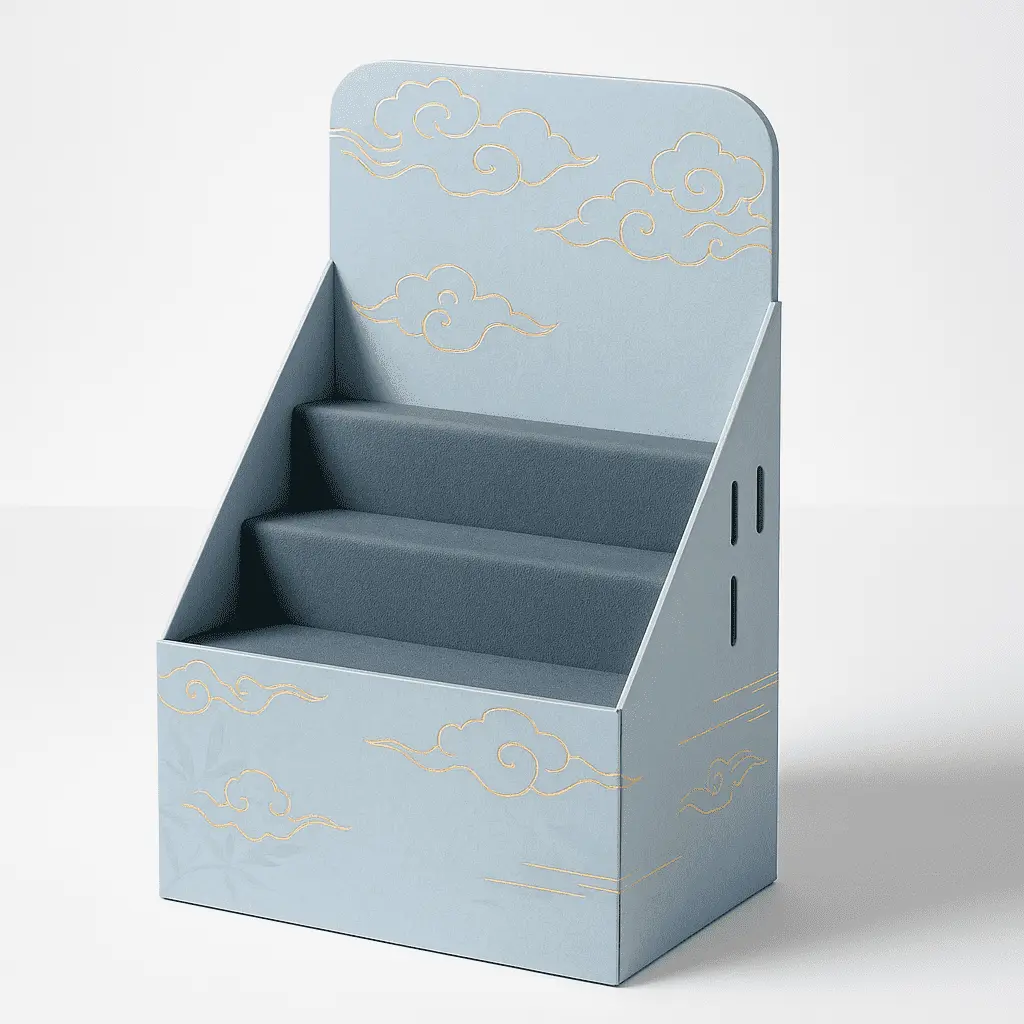Minimum Order Quantities: What to Expect from Display Stand Manufacturers
When it comes to sourcing display stands for your products, understanding minimum order quantities (MOQs) is crucial. Display stand manufacturers typically set MOQs to ensure production efficiency and maintain cost-effectiveness. For businesses seeking these versatile marketing tools, MOQs can range from 50 to 500 units, depending on the complexity of the design, materials used, and the manufacturer's production capabilities. Smaller companies might offer lower MOQs but at a higher per-unit cost, while larger manufacturers may require higher quantities but provide more competitive pricing. It's essential to balance your immediate needs with long-term marketing strategies when negotiating MOQs with display stand suppliers to achieve the best value for your investment.

Factors Influencing Minimum Order Quantities for Display Stands
Production Complexity and Customization
The intricacy of your desired display stand design plays a significant role in determining MOQs. Highly customized or complex structures often require more setup time and specialized tooling, leading manufacturers to set higher minimum quantities to offset these initial costs. For instance, a simple cardboard counter display might have a lower MOQ compared to a multi-tiered, illuminated floor stand with interactive elements.
Material Selection and Availability
The choice of materials for your display stands can impact MOQs substantially. Common materials like corrugated cardboard or standard plastics may allow for lower minimum quantities due to their wide availability and ease of processing. However, premium materials such as high-grade acrylics, metals, or sustainable alternatives might necessitate larger orders to justify the procurement and preparation processes.
Manufacturing Techniques and Equipment
Advanced manufacturing techniques, such as digital printing, die-cutting, or injection molding, often require significant setup and calibration. Manufacturers employing these methods may set higher MOQs to ensure the production run is cost-effective. Conversely, simpler manufacturing processes might allow for more flexibility in order quantities, potentially benefiting businesses with smaller budgetary constraints or those testing new display concepts.
Negotiating Minimum Order Quantities with Display Stand Suppliers
Understanding Your Needs and Long-Term Goals
Before engaging with display stand manufacturers, it's crucial to have a clear understanding of your immediate requirements and future marketing plans. Consider factors such as the number of retail locations, frequency of promotional campaigns, and potential for design updates. This foresight will help you negotiate MOQs that align with your business objectives and prevent overstock or underutilization of display stands.
Exploring Flexible Manufacturing Options
Some display stand suppliers offer flexible manufacturing options that can help accommodate lower MOQs. These may include modular designs that allow for easy customization without requiring entirely new production setups, or print-on-demand services for graphic elements. Discussing these possibilities with manufacturers can lead to mutually beneficial arrangements that meet both parties' needs.
Balancing Quality, Cost, and Quantity
When negotiating MOQs, it's essential to consider the interplay between quality, cost, and quantity. While lower MOQs might seem attractive, they often come at a higher per-unit cost. Conversely, agreeing to higher quantities can result in better pricing but may strain storage capabilities or lead to obsolescence if marketing strategies change. Striking the right balance requires careful consideration of your budget, storage capacity, and the anticipated lifespan of the display stands.
Strategies for Managing Minimum Order Quantities Effectively
Collaborative Purchasing and Resource Sharing
For businesses facing difficulties meeting high minimum order quantities (MOQs), collaborative purchasing presents a highly effective solution. By partnering with other retailers, wholesalers, or complementary brands, companies can combine their orders to meet the supplier's MOQ requirements. This cost-sharing strategy not only reduces the financial pressure on each party involved but also encourages networking and long-term partnerships. Additionally, it opens doors to potential cross-promotions, joint marketing efforts, or bundled offerings. This strategy is particularly useful for small businesses or startups that lack the purchasing power to meet MOQs independently.
Phased Production and Delivery Schedules
Negotiating phased production and delivery schedules with display stand manufacturers can significantly ease the strain of high MOQs. Instead of receiving the entire order at once, buyers can arrange for the total quantity to be produced in stages and delivered over time. This staggered approach helps minimize warehousing needs, optimizes inventory flow, and supports better cash flow management. It also gives businesses time to test the display stands’ performance and request adjustments if needed. Suppliers often appreciate this model, as it demonstrates commitment while allowing for greater production planning flexibility.
Leveraging Prototypes and Sample Runs
Before committing to large-scale production, requesting prototypes or small sample runs from display stand suppliers is a smart move. Although these trial orders may cost more per unit, they provide a crucial opportunity to evaluate the product's quality, craftsmanship, and overall impact in a real retail environment. This testing phase enables businesses to gather customer feedback, validate display effectiveness, and make any necessary design improvements. Moreover, it equips buyers with data and confidence to negotiate better terms or higher-volume orders, reducing the risk of costly missteps in full-scale production.
Conclusion
Understanding and effectively managing minimum order quantities is crucial when sourcing display stands for your products. By considering factors such as production complexity, material selection, and manufacturing techniques, you can better navigate negotiations with suppliers. Employing strategies like collaborative purchasing, phased production, and leveraging prototypes can help balance the need to meet MOQs with practical business considerations. Remember, the goal is to find a solution that not only meets your immediate marketing needs but also aligns with your long-term business objectives and budget constraints.
Contact Us
Ready to elevate your product presentation with custom display stands? Our team at Guangzhou Huadu Fetching Color Printing and Packaging Co., Ltd. is here to help you navigate MOQs and find the perfect solution for your business. Contact us today at support@fetchingprinting.com to discuss your display stand needs and discover how we can bring your vision to life.
References
1. Smith, J. (2022). The Complete Guide to Retail Display Manufacturing. Retail Insights Quarterly.
2. Johnson, A. & Lee, S. (2021). Negotiating with Suppliers: Strategies for Optimal MOQs. Journal of Supply Chain Management.
3. Turner, R. (2023). Sustainable Materials in Point-of-Purchase Displays. Green Marketing Review.
4. Chen, L. et al. (2022). Advanced Manufacturing Techniques in the Display Industry. International Journal of Production Research.
5. Brown, K. (2023). The Psychology of Effective Retail Displays. Consumer Behavior Studies.
6. Martinez, E. & Patel, N. (2021). Collaborative Purchasing in Small Business: A Case Study Approach. Small Business Economics Journal.




